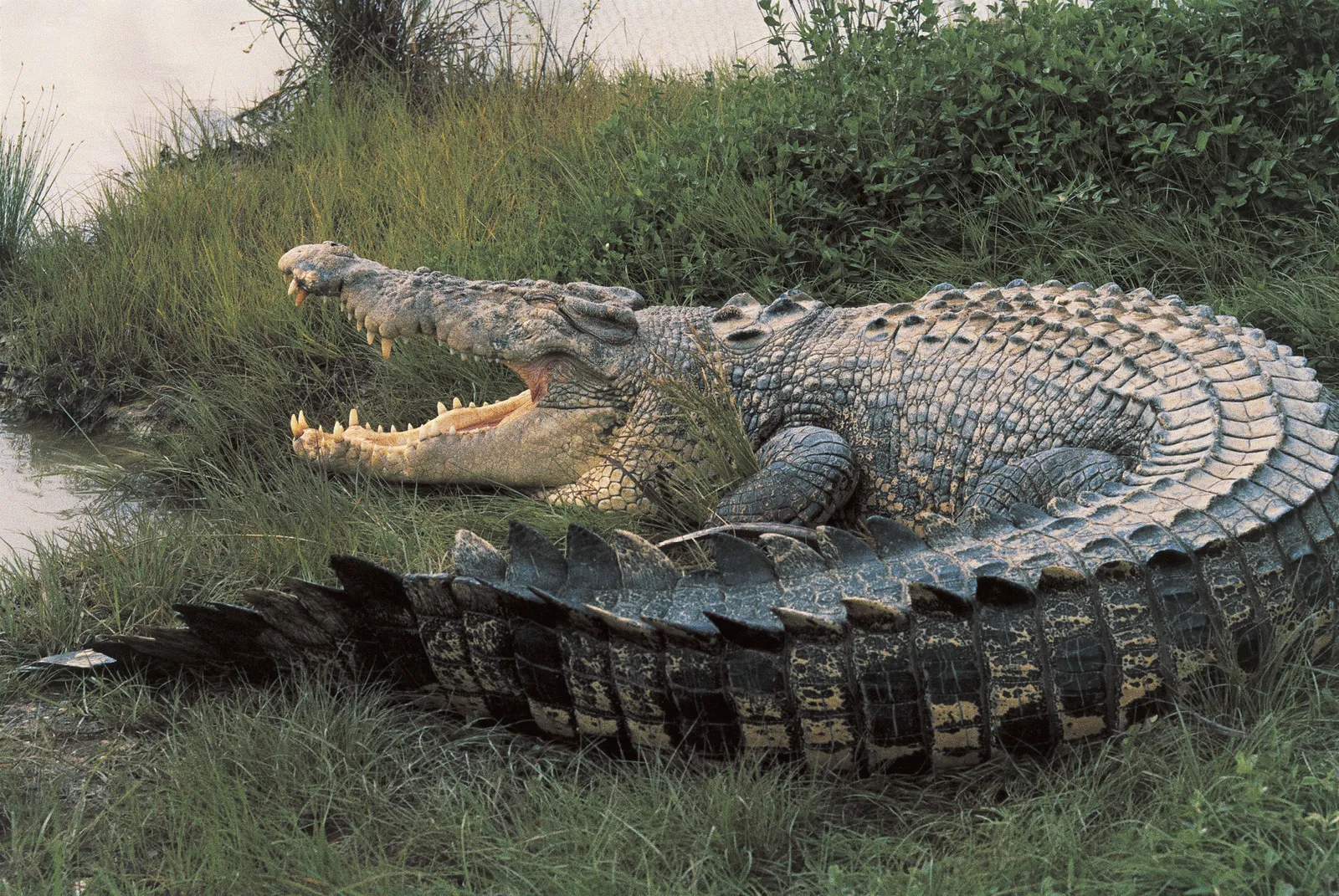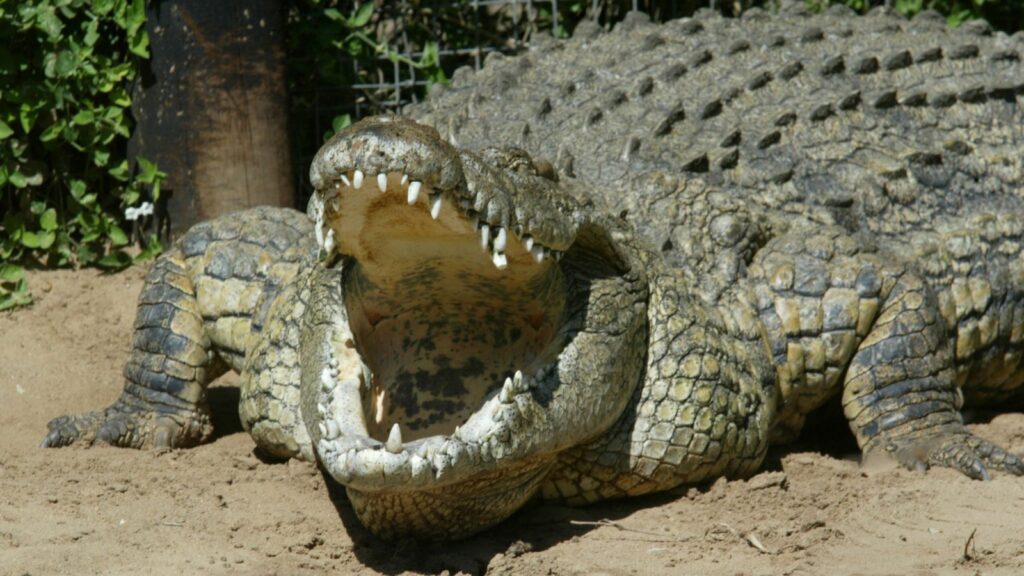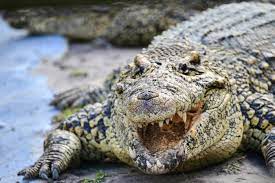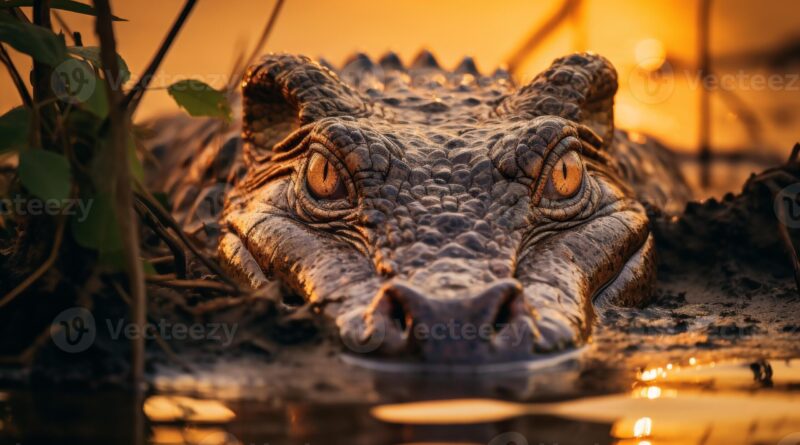Nile Crocodile Field Guide A Comprehensive Overview
Nile Crocodile Field Guide A Comprehensive Overview The Nile crocodile (Crocodylus niloticus) is one of the largest and most formidable predators in Africa, and it plays a crucial role in maintaining the balance of its ecosystem. Found in freshwater habitats across much of the African continent, these ancient reptiles have fascinated humans for centuries. This field guide is designed for researchers, wildlife enthusiasts, and conservationists who want to learn more about the Nile crocodile and how to observe them responsibly in the wild.
Physical Characteristics

Nile crocodiles are distinguished by their massive size and formidable physical features. Males typically grow between 4 to 5 meters in length, with some individuals reaching over 6 meters, while females are generally smaller. Adult males can weigh up to 1,000 kg (2,200 pounds), making them the largest crocodilian species in Africa.
Here’s a table summarizing the key information about the Nile Crocodile based on the article:
| Category | Details |
|---|---|
| Scientific Name | Crocodylus niloticus |
| Average Size | Males: 4-5 meters, some exceeding 6 meters; Females: generally smaller |
| Weight | Males: up to 1,000 kg (2,200 pounds) |
| Coloration | Juveniles: olive or brown with dark cross-banding; Adults: grayish-brown |
| Lifespan | 50-70 years (in the wild); longer in captivity |
| Habitat | Rivers, lakes, marshes, estuaries; adaptable to freshwater and brackish water |
| Geographical Range | Sub-Saharan Africa and Madagascar |
| Diet | Fish, birds, reptiles, mammals (e.g., zebras, antelopes); scavenges carrion |
| Hunting Technique | Ambush predator; waits in water and lunges at prey near the water’s edge |
| Social Behavior | Territorial, especially males during mating season; cooperative hunting for large prey |
| Communication | Vocalizations (distress calls, hissing), body language (posturing) |
| Reproduction | Mating in dry season; females lay 20-80 eggs in sandy or muddy nests; incubation period: ~90 days |
| Sex Determination | Temperature-dependent: cooler nests produce females, warmer nests produce males |
| Hatchling Survival Rate | Low; high predation by birds, fish, and other crocodiles |
| Conservation Status | IUCN Red List: Least Concern; threatened by habitat loss, poaching, and human-wildlife conflict |
| Field Identification Tips | V-shaped snout, large size, coloration; often basking near water bodies or floating with eyes and nostrils exposed |
| Research Tools | Binoculars, long-lens cameras, GPS, field notebooks, wildlife tracking apps |
| Safety Guidelines | Maintain a safe distance, especially during the breeding season or near nests; use binoculars and cameras for observations |
Their skin is rough and covered in bony plates known as scutes, which provide armor-like protection. Young Nile crocodiles are generally olive or brown in color with dark cross-banding on their tails and bodies, but this pattern fades as they grow older. Adult Nile crocodiles have a more uniform, grayish-brown coloration that helps them blend into their surroundings. Their vertical-slit pupils allow them to hunt effectively in low light conditions, and their powerful jaws house 64 to 68 sharp, conical teeth, perfect for gripping prey.
Distribution and Habitat
The Nile crocodile’s range stretches across much of sub-Saharan Africa, from the Nile River in the north to South Africa. They are also found in Madagascar, though the populations there are smaller. These crocodiles thrive in freshwater habitats such as rivers, lakes, marshes, and estuaries, but they can also tolerate brackish water. Ideal environments for Nile crocodiles are locations with abundant prey and easy access to water, where they can remain submerged, waiting to ambush their prey.
While they are relatively sedentary, during the dry season Nile crocodiles will migrate in search of water, often traveling long distances. Seasonal changes also influence their behaviors, as they become more active during the cooler, wetter months.
Behavior and Social Structure

Nile crocodiles are ambush predators, known for their stealth and patience. They often lie in wait near the water’s edge, using their powerful tails to propel themselves at lightning speed towards unsuspecting prey. Their diet primarily consists of fish, but they also feed on birds, reptiles, and mammals, including zebras, wildebeests, and antelope that come to the water to drink.
While primarily solitary hunters, Nile crocodiles are social animals when it comes to basking and nesting. Males are highly territorial during the mating season, and dominant individuals often display aggression to assert their rank. However, Nile crocodiles also exhibit surprising cooperation, especially when hunting large prey, where multiple individuals may work together to subdue it.
Their communication is varied, using a mix of vocalizations and body language. Juvenile crocodiles often emit distress calls that bring adults to their aid, while adults may hiss or growl to warn off threats.
Reproduction and Life Cycle
Mating season for Nile crocodiles occurs during the dry season, when males display aggressive territorial behavior and engage in complex mating rituals to attract females. After mating, females lay their eggs in nests dug into sandy or muddy riverbanks. The temperature of the nest determines the sex of the hatchlings—a process known as temperature-dependent sex determination.
The incubation period lasts about 90 days, after which the mother helps her young hatch and carries them to the water in her mouth. Despite this maternal care, hatchlings face numerous threats from predators like birds, fish, and other crocodiles. Only a small percentage of the young survive to adulthood.
Conservation Status

The Nile crocodile is currently classified as “Least Concern” on the IUCN Red List, but their populations are threatened by human activities. Habitat loss due to dam construction, agricultural expansion, and pollution poses a significant threat to their survival. In some regions, crocodiles are hunted for their skin, which is highly valued in the leather trade, as well as for meat and traditional medicine.
Conservation efforts are ongoing across many African countries to protect Nile crocodile populations. Protected areas, strict regulations on hunting, and community education programs are helping to safeguard this species. It’s important to remember that Nile crocodiles, as apex predators, play a vital role in maintaining the health of freshwater ecosystems.
Tips for Field Identification
Spotting a Nile crocodile in the wild is a thrilling experience. To identify them, look for their size, distinct coloration, and location near water bodies. Nile crocodiles often bask on riverbanks or float with just their eyes and nostrils above the water.
In areas where multiple crocodile species exist, distinguishing features can be important. For example, the Nile crocodile has a V-shaped snout, compared to the U-shaped snout of the West African crocodile. Additionally, Nile crocodiles tend to be larger and more aggressive than their cousins.
For those observing crocodiles in the wild, safety should always be a priority. Never approach too closely, especially during the breeding season or when young are present. Observing from a distance using binoculars or long-lens cameras is ideal.
Tools for Field Research

Field researchers should come equipped with the right tools to enhance their observations and data collection. A good pair of binoculars, a camera with a long lens, and a field notebook for recording behaviors and sightings are essential. GPS devices can help track movements and mark important locations, and there are several apps available to assist with identifying wildlife and recording observations.
When observing wildlife, ethical practices should always be followed. This means minimizing disturbances to the animals and their habitats, avoiding direct interaction, and ensuring that research or tourism activities do not negatively impact the local ecosystems.
Conclusion
The Nile crocodile is an iconic species, both feared and revered for its power and adaptability. Understanding their behavior, habitat, and conservation status can help researchers and enthusiasts appreciate these magnificent reptiles while contributing to their protection. Whether you are a researcher in the field or a curious traveler, the Nile crocodile offers a fascinating glimpse into the ancient world of reptiles.
This article would be a great addition to your Crocogen website, providing a detailed and educational guide for those interested in learning about the Nile crocodile.
Here are some practical tips for observing and studying Nile crocodiles in the wild, perfect for adding to your Crocogen website:
Tips for Observing Nile Crocodiles in the Field
Spotting Crocodiles in the Wild
- Focus on Water Sources: Nile crocodiles are most commonly found near rivers, lakes, and wetlands. Look for them basking on the banks or floating with just their eyes and nostrils visible above the water.
- Morning and Late Afternoon are Prime Times: Crocodiles are more active during cooler parts of the day. Early mornings and late afternoons are the best times to spot them basking or hunting.
- Patience is Key: Crocodiles are ambush predators that stay very still to avoid detection. Stay still and patient—often, they are not immediately visible until they move.
Distinguishing Nile Crocodiles from Other Species
- Check the Snout: Nile crocodiles have a V-shaped snout, while some other crocodiles, like the West African crocodile, have a more rounded, U-shaped snout.
- Size Matters: Nile crocodiles are typically larger than other species, with adult males growing over 5 meters (16 feet).
- Look for Behavior Patterns: Nile crocodiles are more aggressive and social than some other crocodile species, particularly during mating season or near prey-rich areas.
Safety Guidelines for Fieldwork
- Maintain a Safe Distance: Crocodiles are fast and powerful. Keep a minimum distance of 10 meters (33 feet), and never approach them, especially when near nests or juveniles.
- Do Not Feed or Bait Crocodiles: Feeding crocodiles can make them associate humans with food, increasing the risk of dangerous encounters.
- Stay Upriver from Crocodiles: When observing or boating, always stay upriver, as crocodiles tend to float downriver toward prey.
- Avoid Water at Dusk and Dawn: These are peak times for crocodile hunting activity. Stay away from water edges and avoid swimming in crocodile habitats during these times.
Essential Field Equipment
- Binoculars: A good pair of binoculars allows you to observe crocodiles from a safe distance without disturbing them.
- Long-Lens Camera: For researchers or wildlife photographers, a long-lens camera helps capture clear images from a distance.
- GPS Device: If you’re tracking movements or locations, a GPS device can help you mark important points and navigate safely in crocodile territory.
- Field Notebook: Keep notes on behaviors, environmental conditions, and crocodile movements for future reference and research.
Ethical Wildlife Observation
- Do Not Disturb Nests: Female Nile crocodiles are very protective of their nests. Observing from a distance ensures you don’t disturb the crocodile or risk aggressive behavior.
- Minimize Your Impact: Avoid making noise or sudden movements, which could stress the animals or disrupt their natural behaviors.
- Follow Local Regulations: Many regions have strict guidelines for observing wildlife. Always follow local laws and respect protected areas.
Best Time for Field Research
- During the Dry Season: The dry season, when water bodies shrink, makes it easier to locate Nile crocodiles. They gather near remaining water sources, making them easier to observe in higher numbers.
- Breeding Season for Behavior Observation: If you want to study social behaviors, the breeding season is ideal. Males display territorial aggression, and you may witness interesting courtship rituals.
Nile Crocodile FAQs
What is the average lifespan of a Nile crocodile?
Nile crocodiles can live for 50 to 70 years in the wild, although individuals in captivity may live even longer due to controlled conditions and lack of predators.
How can I identify a Nile crocodile?
Nile crocodiles can be identified by their V-shaped snout, large size, and grayish-brown coloration. Young crocodiles often have distinctive dark cross-banding on their bodies.
Are Nile crocodiles dangerous to humans?
Yes, Nile crocodiles are considered dangerous. They are apex predators and can be aggressive, especially when protecting their territory or young. It is crucial to maintain a safe distance and avoid approaching them in the wild.
What do Nile crocodiles eat?
Nile crocodiles are carnivorous and primarily eat fish, but they also hunt birds, mammals, and occasionally scavenged carrion. Their diet can vary based on availability and season.
Where can I find Nile crocodiles?
Nile crocodiles inhabit a range of freshwater environments, including rivers, lakes, swamps, and wetlands across sub-Saharan Africa. They can also tolerate brackish water in some regions.
How do Nile crocodiles reproduce?
During the dry season, females lay 20 to 80 eggs in nests constructed from vegetation and mud. The incubation period lasts about 90 days, with the temperature of the nest determining the sex of the hatchlings.
Are Nile crocodiles social animals?
While primarily solitary hunters, Nile crocodiles can exhibit social behaviors, especially during basking or breeding. Males may engage in aggressive displays to establish dominance during the mating season.
How can I safely observe Nile crocodiles in the wild?
To safely observe Nile crocodiles, maintain a distance of at least 10 meters (33 feet), use binoculars or a long-lens camera for viewing, and avoid approaching nests or young crocodiles. It’s best to observe during the cooler parts of the day.
What threats do Nile crocodiles face?
Nile crocodiles face several threats, including habitat loss due to agriculture and urbanization, poaching for skin and meat, and human-wildlife conflict. Conservation efforts are in place to protect their populations.
How do Nile crocodiles communicate?
Nile crocodiles communicate through vocalizations (like hissing and growling), body language, and posturing. Juveniles can emit distress calls that prompt adult crocodiles to respond.
Can Nile crocodiles survive in saltwater?
While primarily freshwater animals, Nile crocodiles can tolerate brackish water and are occasionally found in coastal areas. However, they do not typically inhabit fully marine environments.
What role do Nile crocodiles play in their ecosystem?
As apex predators, Nile crocodiles help maintain the balance of their ecosystems by controlling populations of fish and other prey species. Their presence indicates a healthy aquatic environment.
